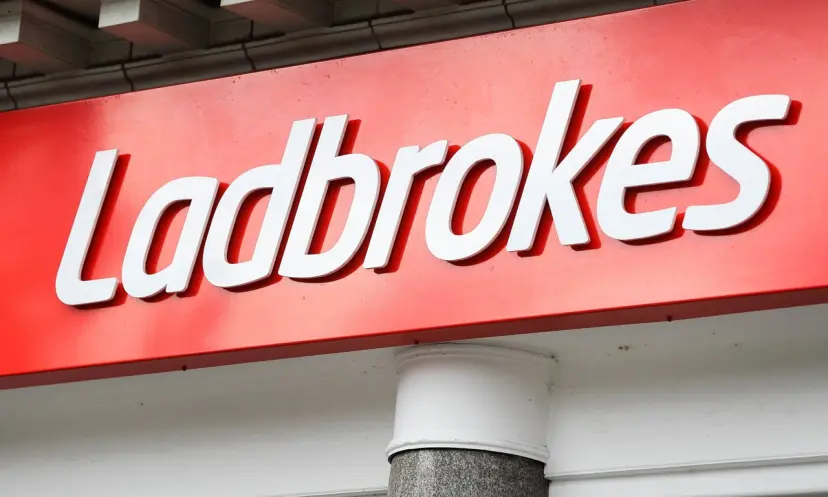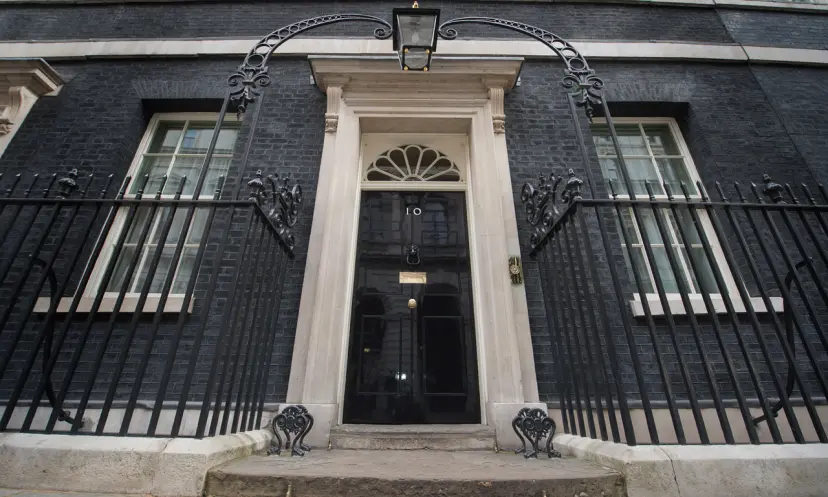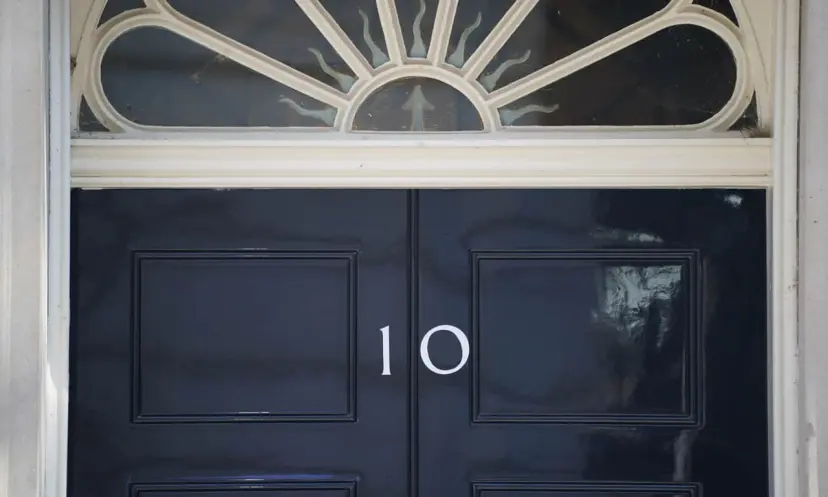Remain has the upper-hand when it comes to attracting voters
Published: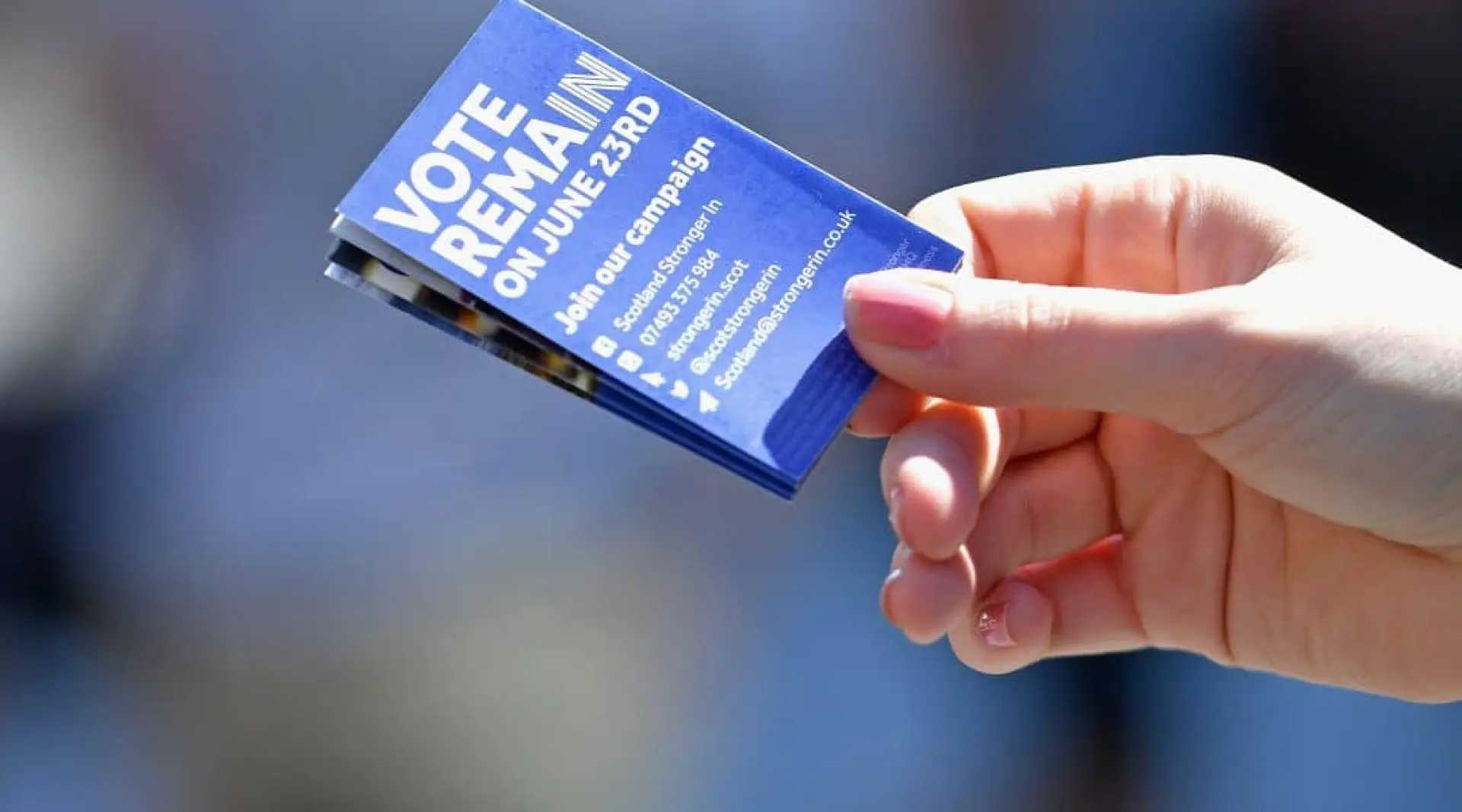
As the Brexit referendum draws near, both sides are focused on the ground war, hoping that leaflets, rallies and bus tours will tilt the result their way.
The strategy is clear: The side that can get more of their voters to the polls will have the edge, which is why this referendum has become far more about mobilisation than persuasion.
Our EU Referendum Events Project at the Universities of Kent and Nottingham, which is mapping campaign events in real time, shows Remain is far more active than Leave, the bulk of the activity on both sides is concentrated on London, and Brexit backers have yet to target northern England, which should be fertile ground for Euroskeptics.
The race is tight. On Monday, ICM released the results of two new polls, one conducted online and the other by telephone.
Both put Leave ahead by a margin of 52 percent to 48 per cent. However, across all polls in May, Remain averaged 45.1 per cent and Leave 41.4 per cent, with the remainder undecided.
While Remain has held a consistent lead, it has often been within the margin of error. And not all of the undecided voters are closet Europe supporters. When pollsters “squeeze” them they find only a slight advantage for Remain.
The probability that Remain will win now stands at 76 per cent, but its forecast lead is often small, according to the reputable website Elections Etc., run by Stephen Fisher at the University of Oxford.
In statistical models that do not rely on the polls, Remain’s forecast vote share is just 51.8 per cent. In models that do draw on the polls, it is 53.7 per cent. In the betting markets and forecasts by citizen volunteers, it’s 54 per cent. And in surveys of known experts, it is still only 56 per cent.
Combined, the average forecast vote share for Remain is 54.3 per cent, putting Leave on 45.7 per cent. Given that virtually every academic forecast ahead of the 2015 general election was wrong and that, as any Corbynista or Trumper will tell you, experts are not always accurate readers of public opinion, the Remain camp has no room for error.
* * *
So who is winning? We are gathering data on all events listed on websites and in local media and then matching these events to our own data on levels of Euroskepticism.
While we are unable to map private events, such as a local leafleting session that does not get listed on the official campaign websites, we can still build a comprehensive picture of the official campaign.
There were almost 600 events last weekend alone — 387 organized by Remain and 207 by Leave — from a Vote Leave day of action in a London borough to the canvassing by Britain Stronger in Europe of young, diverse areas such as Brighton, Bristol, Cambridge and Manchester.
We have counted more than 3,500 events since the start of 2016. By mid-May, almost 80 per cent of the entire country had seen at least one event. Yet this activity has not been spread evenly.
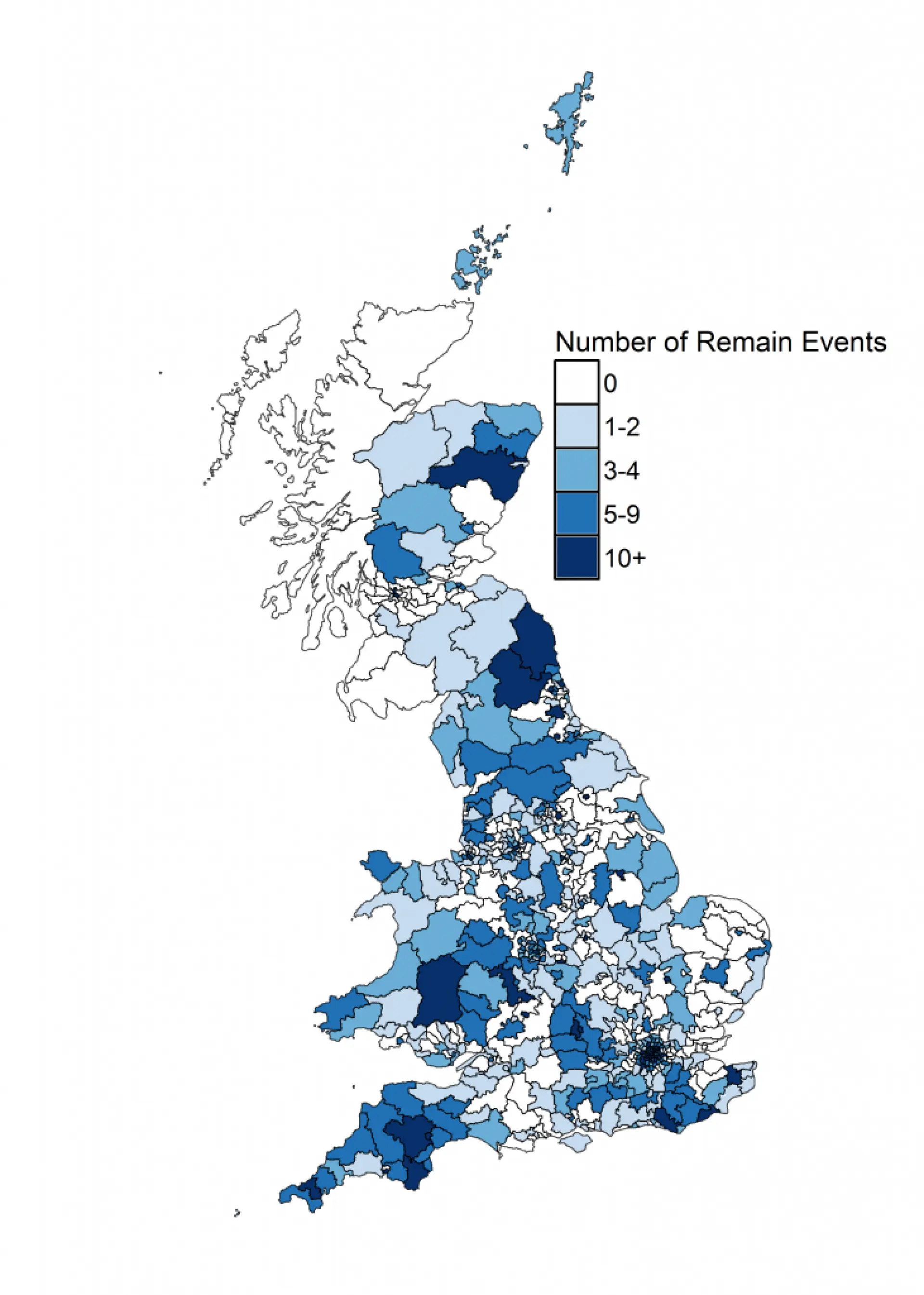
In British politics, you often hear the complaint that few people like to travel outside of London and our data supports this view.
London and southeast England have hosted the bulk of events. The one constituency that has seen more events than any other is where the worlds of media and politics collide, the Cities of London and Westminster. In fact, of the 50 seats that have seen the largest number of referendum events, more than half of them are in London.
By contrast, the northern areas of Scotland, northwest England and Yorkshire have seen the least. The referendum is thus merely the latest event to shine a light on the country’s north-south divide.
When it comes to the question of which camp is more active, the answer appears to be Remain.
Of all the events so far, more than 2,100 have been organized by Remain and less than 1,400 by Leave.
While Remain has held roughly 3.5 events per area, Leave has held 2.2 events. Indeed, our data suggest that Remain has established a clear lead in the ground war and one that is widening over time. In the first official week of the campaign, Remain was more active than Leave in 187 areas and Leave was more active than Remain in 163 areas, meaning Remain has a net advantage of +24 areas.
Over the campaign this advantage has increased to +50 in week two, +90 in week four, +109 in week five and +118 in week six.
There have been some exceptions. Leave has been more active in the East Midlands, a strongly Euroskeptic region, and has kept pace with Remain along the east coast of England, Scotland, the southeast and Wales.
But Remain has dominated across a larger swath of territory, including London, northern England, the southwest, West Midlands and Yorkshire. And that is not all.
Remain also seems to be making smarter choices and reaching more voters.Last weekend, Britain Stronger In Europe held events in London, Birmingham, Bristol, Brighton and Cambridge, which reflects how Remain is targeting more densely populated areas where there are lots of pro-EU voters.
Remain has completely dominated constituencies that have younger, diverse and progressive electorates, such as London and Westminster, Glasgow Central, Birmingham Ladywood, Vauxhall, Newcastle-upon-Tyne Central, Sheffield Central, Battersea and Tooting, the former seat of London Mayor Sadiq Khan.
That Remain appears to be making smarter choices is also reflected by the fact that by mid-May 41 percent of all Remain events had taken place in very pro-EU areas, while 22 per cent of Leave events had taken place in very Euroskeptic areas.
While Leave has been spending lots of time in London, it has been especially active in eastern England — parts of Essex, Lincolnshire, the East Midlands and Kent. More than 50 per cent of the seats where Leave is more active than Remain are in the eastern half of England where in the past the UK Independence Party (UKIP) attracted strong support.
There has also been a strong focus on Wales where the left-behind industrial working-class, which recently propelled UKIP into the Welsh Assembly, looks receptive to the Leave message.
Yet one area where Leave has not been as active as you might expect is in the northern Labour heartlands. In fact, less than 1 per cent of all Leave events in our database have been held in northeast or northwest England — a striking finding when you consider that in many of these Labour areas, blue-collar voters have already made UKIP the official opposition party.
Does all of this matter? We think it does. In a tight race, how the two sides are trying to mobilize supporters on the ground could make the difference.
As things stand, with only a few weeks to go, our data suggest the Remain camp currently has the edge by holding more events in more densely-populated areas and making more strategic choices about where it is hunting for votes.
Leave is not far behind and is focusing on some notably Euroskeptic terrain, but they may want to use what little time there is left to reevaluate whether they are campaigning as fully as they could in some of the heartlands of British Euroskepticism.
All Odds and Markets are correct as of the date of publishing.
